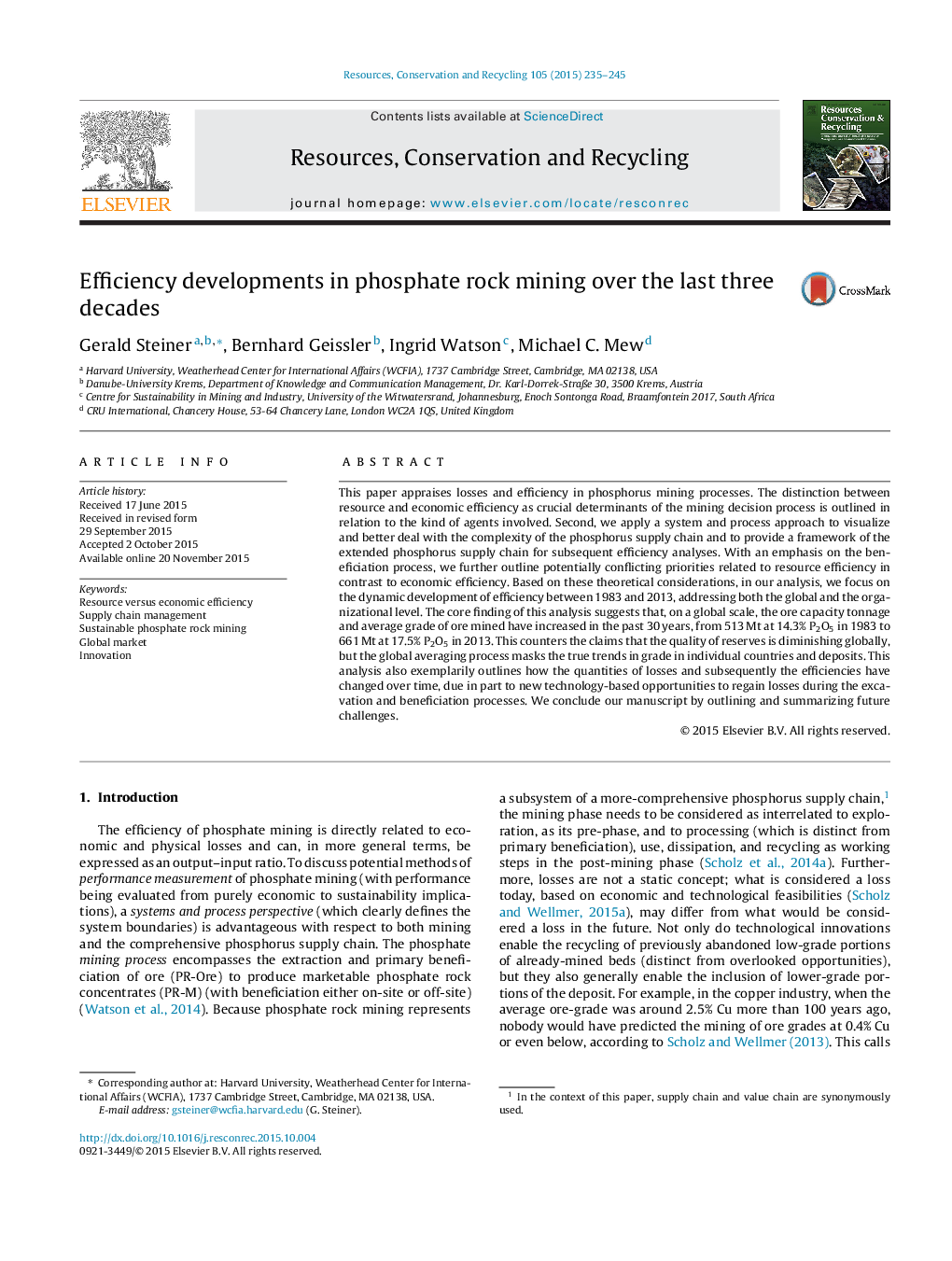| Article ID | Journal | Published Year | Pages | File Type |
|---|---|---|---|---|
| 1062742 | Resources, Conservation and Recycling | 2015 | 11 Pages |
This paper appraises losses and efficiency in phosphorus mining processes. The distinction between resource and economic efficiency as crucial determinants of the mining decision process is outlined in relation to the kind of agents involved. Second, we apply a system and process approach to visualize and better deal with the complexity of the phosphorus supply chain and to provide a framework of the extended phosphorus supply chain for subsequent efficiency analyses. With an emphasis on the beneficiation process, we further outline potentially conflicting priorities related to resource efficiency in contrast to economic efficiency. Based on these theoretical considerations, in our analysis, we focus on the dynamic development of efficiency between 1983 and 2013, addressing both the global and the organizational level. The core finding of this analysis suggests that, on a global scale, the ore capacity tonnage and average grade of ore mined have increased in the past 30 years, from 513 Mt at 14.3% P2O5 in 1983 to 661 Mt at 17.5% P2O5 in 2013. This counters the claims that the quality of reserves is diminishing globally, but the global averaging process masks the true trends in grade in individual countries and deposits. This analysis also exemplarily outlines how the quantities of losses and subsequently the efficiencies have changed over time, due in part to new technology-based opportunities to regain losses during the excavation and beneficiation processes. We conclude our manuscript by outlining and summarizing future challenges.
